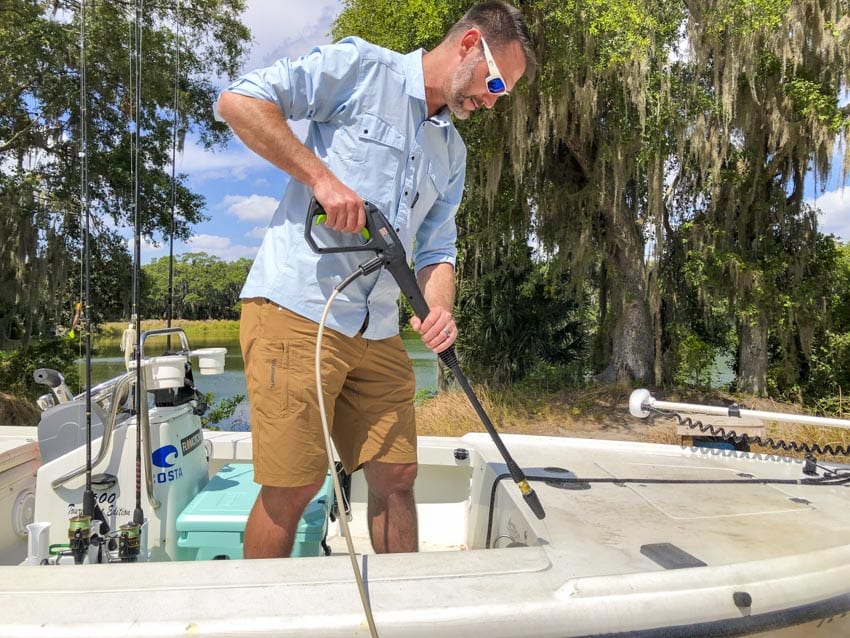In today’s world of fake news and misleading information, it can be infuriating to discover you’ve been lied to. Sometimes, marketing can walk a fine line between what’s legal and not but can still mislead consumers. One that’s caused a lot of confusion is PSI Max* and GPM Max* on pressure washers. Seemingly taking a cue from the 20V Max products we see in the power tool sector, understanding what these terms mean can save you from making a poor purchase decision.
You Might Also Enjoy
- What is PSI Max* and GPM Max*
- 20V Max vs 18V: Guess What? They’re the Same!
- Best Pressure Washers
- Best Electric Pressure Washers
Certifying Pressure Washer PSI and GPM
In today’s world where it’s hard to know who to trust, objective testing and data are worth their weight in gold for people who want the honest truth. When it comes to shopping for pressure washers, certified PSI and GPM ratings from PWMA (Pressure Washer Manufacturer’s Association) and CETA (Cleaning Equipment Trade Association) are very important because they tell you what you can expect when you’re actually working.
That seems like kind of a “duh” statement, and until a few years ago, I wouldn’t have thought it worth writing an article about. But that was before the term “PSI Max” and “GPM Max” started showing up on brands such as Westinghouse. It’s a measurement that tells you the highest momentary pressure you can get. The upside is you have an idea of the greatest injury/damage potential. The downside is that it’s usually way off from the working pressure.
Pressure Washer PSI Case Study
Take Westinghouse’s WPX2300e. It’s a 13-amp electric pressure washer that boldly claims 2300 PSI Max* with 1.76 GPM Max* and runs $199. To get similar numbers from PWMA-certified Greenworks or Ryobi, the best you can do is $299, and you’re still short by more than 0.5 GPM.
But try to find the working load PSI and GPM you’ll experience at the nozzle and it’s tough to find. Maybe it’s on the box, but I couldn’t find it in the manual, on the product page, on retailers’ pages, or through a Google search. The point is, you can’t get a good comparison and you don’t know what pressure or water flow you’re working at.
Below is an example from Sun Joe’s popular SPX3000. Until recently, they used PSI Max* and GPM Max* but also listed their working numbers. Now, they say their numbers are “Certified Rated” and have changed the specifications they report. Sun Joe doesn’t seem to be using the CETA or PWMA approval seals, so we’re not sure who the certifying agency is or what standards they’re referring to. While Sun Joe has changed its messaging, we can use the historical numbers as an example of how different Max* numbers can be from reality.
The SPX3000 claimed 2030 PSI and 1.76 GPM. According to their typical working load numbers, you actually got 1450 PSI and 1.24 GPM of cleaning power. That’s 28.6% lower PSI and 29.5% lower GPM from the Max ratings. If you assumed the PSI Max* and GPM Max* ratings matched up with other competitors, the performance difference would be disappointing.
The potential for these Max* numbers to be misleading triggered changes based on the Better Business Bureau’s National Advertising Division findings.
PWMA-Certified vs PSI Max* and GPM Max* Pressure Washers
| Greenworks GPW2003 | Ryobi RY142022 | Sun Joe SPX3000 | |
| PSI Max | NA | NA | 2030 PSI Max |
| Working PSI | 2000 PSI | 2000 PSI | 1450 PSI |
| GPM Max | NA | NA | 1.76 GPM Max |
| Working GPM | 1.2 GPM | 1.2 GPM | 1.24 GPM |
*Note: These are previously reported figures. Sun Joe no longer advertises these exact specifications for this model.
The Bottom Line
The main point in all of this is that if you’re seeing pressure washer PSI numbers that seem too good to be true for the price, it probably is. Going with a PWMA or CETA-certified pressure washer carries with it the confidence that the ratings the unit claims are what you can expect to get when you’re pressure cleaning.



